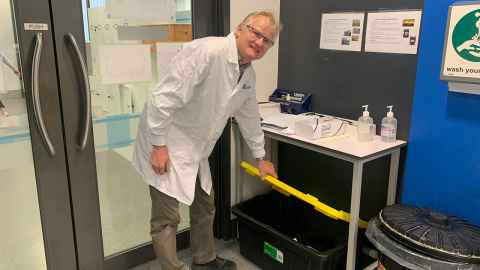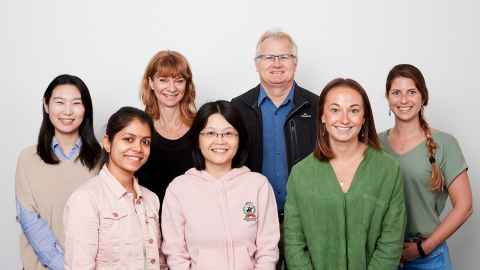Liggins lab earns sustainability stripes
9 November 2022
The Liggins Institute’s laboratory has earned the highest level of international sustainability certification.

A raft of sustainability initiatives have earned the Liggins Institute’s laboratory the highest level of international sustainability certification.
The research lab is the first university lab in Aotearoa New Zealand to gain My Green Lab certification and only the second lab of any sort across New Zealand.
My Green Lab is a not-for-profit, run by and for scientists, that sets standards for sustainability and supports labs to reach them.
“Laboratories are significant energy consumers and waste producers, so tackling their environmental impact helps achieve the University’s sustainability goals in its strategy Taumata Teitei,” Liggins director Professor Frank Bloomfield says.

The green lab award comes as Waipapa Taumata Rau, University of Auckland is placed tenth in the 2023 QS Sustainability Rankings, as well as placing sixth in the Times Higher Education 2022 impact rankings. Find out more.
A My Green Lab survey of lab users kicked off the accreditation process, finding the laboratory was doing well but there were areas for improvement.
“It has been a matter of educating people about what we were already doing, as well as making some key shifts in laboratory practice,” says Liggins technical services manager Eric Thorstensen.
The laboratory had been recycling for some time, for example by sending old lab coats to schools and ice packs to the University’s Recreation (Rec) Centre. However, it stepped up its efforts to earn the accreditation.
The ice pack initiative started about 18 months ago as a way of reusing the cold packs that come with refrigerated deliveries by sending them to the Rec Centre.
Customer experience supervisor Clarissa Mafoe says, “Since our first ice-pack pick-up, we have been able to not only provide for our members’ injuries, but we have also given out a few boxes to low-decile schools in south Auckland.”
Liggins researchers have increased their focus on maximising the use of stock.
“We have developed an inventory and a checklist for people when they leave the lab, because often there’s a whole lot of unused stuff that gets forgotten. It helps ensure we actively use products up, before we replace them,” Eric says.
Another important area was making lab users conscious of water and energy usage.
Labs are very energy intensive, with two items alone – incubators and tissue/cell culture hoods – using as much energy in a year as an average household.
Signs around the lab now alert people to which items can be safely turned off, and timers and sensors are being introduced.
“Simple acts, such as turning off equipment after use and lights in unused rooms, help conserve energy and save the University money,” Eric says.
A Property Services electrician calculated that changing all the lab lighting to LED would save $23,000 over ten years; however, this initiative hasn’t been actioned yet.
While there is a cost to the My Green Lab process, Eric says it has proved its worth ‑ not only for the savings, but also reducing the lab’s environmental footprint.
Many of the changes are simple and just take a shift in awareness, he says.
“Sustainable practices aren’t hard, anyone can do them, we just generally don’t in a workplace setting.”
- If you are interested in My Green Lab accreditation, Eric is happy to offer advice and assistance, email: e.thorstensen@auckland.ac.nz
Media queries
Liggins media adviser Jodi Yeats
M: 027 202 6372
E: jodi.yeats@auckland.ac.nz